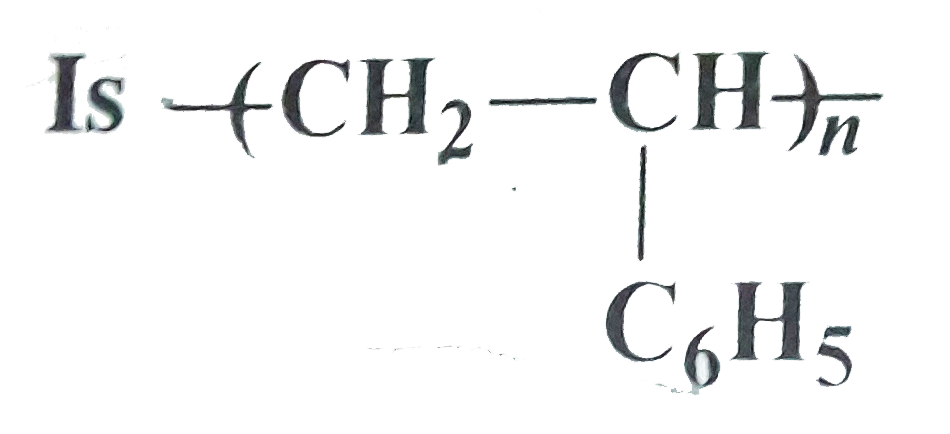Can a copolymer be formed in both addition and condensation polymerization ? Explain with examples.
Video Solution
|
Answer
Step by step video & image solution for Can a copolymer be formed in both addition and condensation polymerization ? Explain with examples. by Chemistry experts to help you in doubts & scoring excellent marks in Class 12 exams.
Updated on:21/07/2023Topper's Solved these Questions
- POLYMERS BOOK - ICSECHAPTER - POLYMERS EXERCISE - EXERCISE (PART-II (DESCRIPTIVE QUESTIONS )) ( LONG ANSWER QUESTIONS )
37 Videos
- POLYMERS BOOK - ICSECHAPTER - POLYMERS EXERCISE - ISC EXAMINATION QUESTIONS
10 Videos
- POLYMERS BOOK - ICSECHAPTER - POLYMERS EXERCISE - EXERCISE (PART-II (DESCRIPTIVE QUESTIONS )) ( SHORT ANSWER QUESTIONS )
1 Videos
- P-BLOCK ELEMENTSBOOK - ICSECHAPTER - P-BLOCK ELEMENTSEXERCISE - SOURCE BASED QUESTIONS
10 Videos
- PROLEMS BASED ON CHEMICAL STRUCTURES AND REACTIONS BOOK - ICSECHAPTER - PROLEMS BASED ON CHEMICAL STRUCTURES AND REACTIONS EXERCISE - QUESTIONS
185 Videos
Similar Questions
Knowledge Check
Polymer obtained by the condensation polymerization is
ApolytheneBteflonCphenol-formaldehyde resinDnitrile rubber.Monomers are simple molecules, which combine with each other to form polymers. Each polymer has a repeating structural unit. Polymers formed from the same type of monomers are called homopolymers and if two or more different repeating units (monomers) make up the polymer, it is known as a copolymer. Both homopolymers and copolymers may be formed either by addition or condensation reactions. Alkenes adn dienes polymerize by addition (chain growth) mechanism involving carbocations, carbanions or free radical intermediates. Dienes (chloroprene, isoprene, etc) polymerize by 1, 4-addition mechanism to give cis-or trans-polymers. Natural rubber is however, cis-polyisoprene. Natural rubber is quite soft and flexible but these properties can be improved by a process called vulcanization. In contrast, bifunctional monomer molecules undergo condensation or step-growth polymerization. Polymers which can be heated and reshaped as many times as desired are called thermoplastics (polythene, polystyree, PVC teflon, etc). While those which can be heated only once to give a particular shape are called thermosetting polymers (Bakelite, Melmac etc)
Which of the following are examples of homopolymers?ASBR, glyptal, nylon-6, 6BNylon-6, butyl rubber, styrene rubberCPolyethene, polypropene, PVCDMelmac, bakelite, teflonMonomers are simple molecules, which combine with each other to form polymers. Each polymer has a repeating structural unit. Polymers formed from the same type of monomers are called homopolymers and if two or more different repeating units (monomers) make up the polymer, it is known as a copolymer. Both homopolymers and copolymers may be formed either by addition or condensation reactions. Alkenes adn dienes polymerize by addition (chain growth) mechanism involving carbocations, carbanions or free radical intermediates. Dienes (chloroprene, isoprene, etc) polymerize by 1, 4-addition mechanism to give cis-or trans-polymers. Natural rubber is however, cis-polyisoprene. Natural rubber is quite soft and flexible but these properties can be improved by a process called vulcanization. In contrast, bifunctional monomer molecules undergo condensation or step-growth polymerization. Polymers which can be heated and reshaped as many times as desired are called thermoplastics (polythene, polystyree, PVC teflon, etc). While those which can be heated only once to give a particular shape are called thermosetting polymers (Bakelite, Melmac etc)
Which of the following are examples of thermoplastics?APolyethene, bakelite, nylon-6BGlyptal, melmac, polyesterCPVC, PMMA, PolystyreneDPolypropylene, urea-formaldehyde resin, teflon
How can you differentiate between addition and condensation polymerisation ?
View SolutionHow can you differentiate between addition and condensation polymerisation ?
View SolutionWhat is meant by addition polymerization ?
View SolutionIs
 a homopolymer or a copolymer?Is it an addition or a condensation polymer?
a homopolymer or a copolymer?Is it an addition or a condensation polymer?
View SolutionGive one example of a condensation polymer.
View Solution
